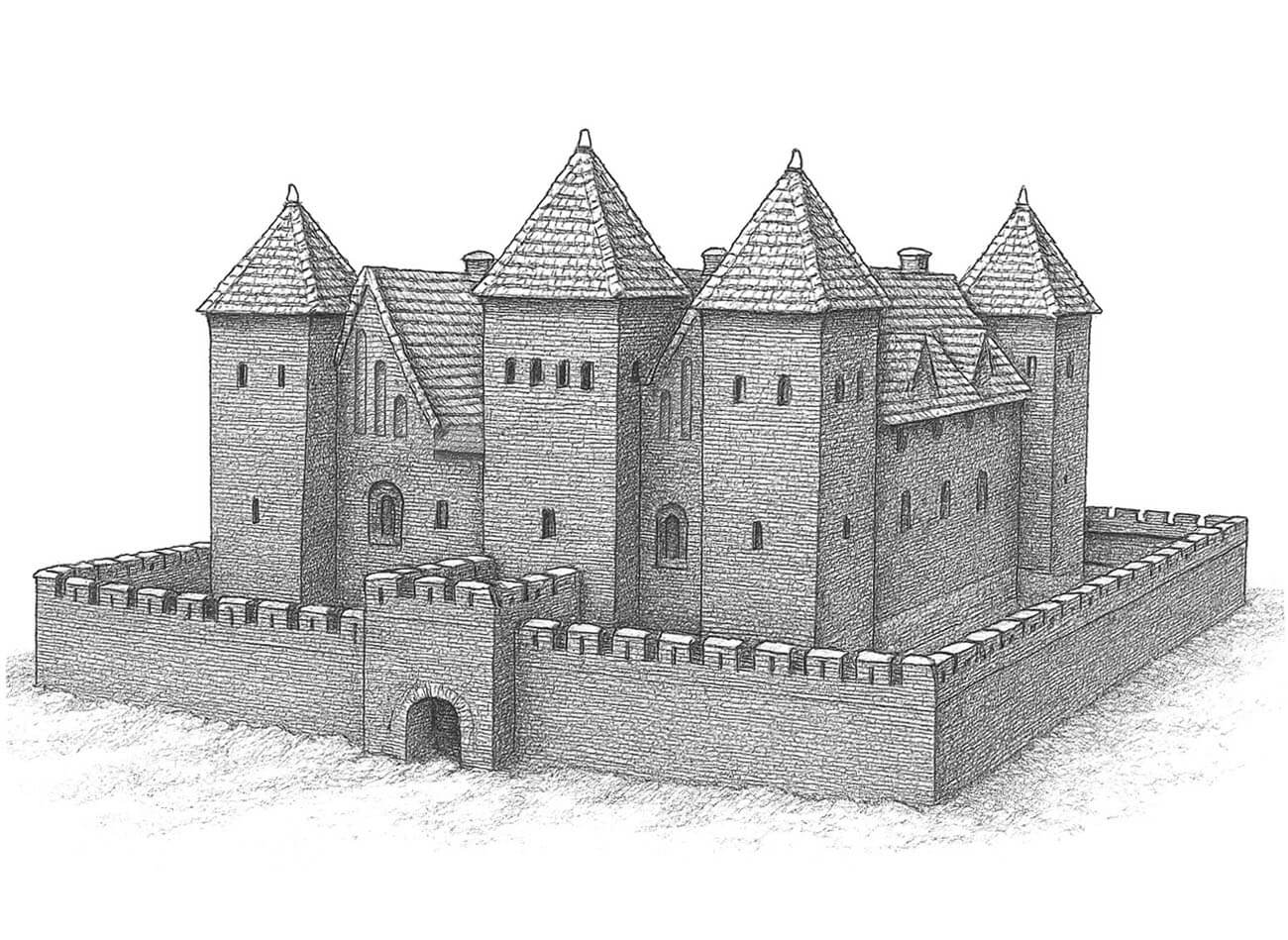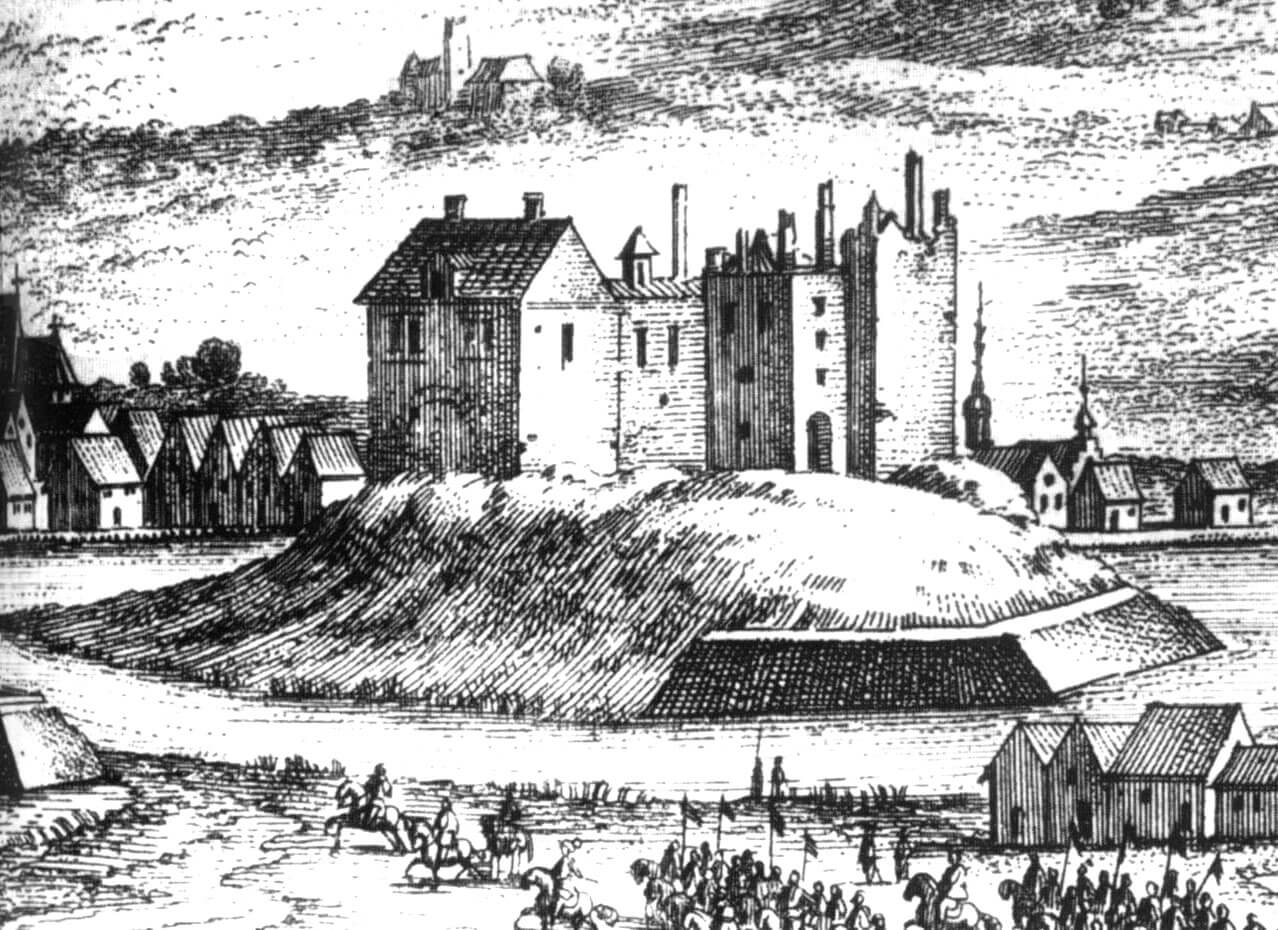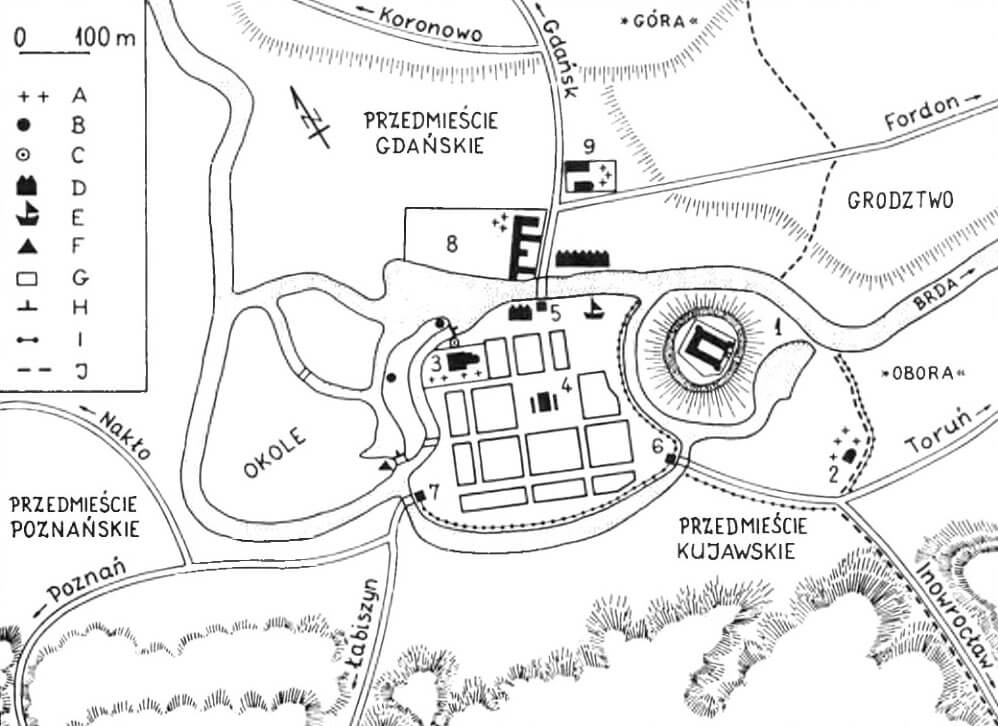History
The castle in Bydgoszcz was founded on the initiative of King Casimir the Great as one of the defensive points strengthening the then Polish-Teutonic border. The construction lasted from around 1343 until the turn of the 1350s and 1360s. After the founder’s death in the years 1370-1377, the castle was handed over as a fief to his grandson Casimir IV, Duke of Pomerania, who located his office and court there, and who died in it in 1377. Then castle was in the possession of Prince Vladislaus II of Opole, and finally in the years 1390-1392 his son-in-law Wigunt-Aleksander, brother of king Władysław Jagiełło. After this period, it returned to the possession of the Crown and functioned as the seat of the starosty.
In 1409, the castle played an important role during the Polish-Teutonic war. It was then captured by the Teutonic Knights and recaptured after an eight-day siege. Here the king signed a truce with the Grand Master of the Teutonic Knights Ulrich von Jungingen, which was in force until 1410. After the fighting ended, the castle needed renovation, which was personally looked after by King Władysław Jagiełło. After the victorious end of the Thirteen Years’ War with the Teutonic Order in 1466, the castle lost its original military significance as a border watchtower. Probably King Sigismund the Old stayed there in 1520, during the parliamentary sessions in Bydgoszcz.
In the early modern period, starosts operating in the castle did not carry out major construction works, leaving the building unchanged. Only in the years 1632-1645 the starost Jerzy Ossoliński surrounded the castle with bastion fortifications. The destruction of the stronghold took place in 1656, it was blown up by Swedish sappers. Gradually dismantled in the eighteenth and nineteenth centuries, it was treated as a source of free building material.
Architecture
The castle was built on an island cut off by the waters of the Brda branch from its right, southern shore. It was built on the site previously occupied by a wood and earth castellan’s stronghold, which relics formed a mound in the shape of an oval, cut off cone. From the west, the castle was adjacent to the city, initially surrounded by wooden and earth fortifications, from the 15th century made of bricks. The economic buildings forming the puter bailey were to be located to the south and south-east of the castle.
The Bydgoszcz Castle was a four-sided complex with dimensions of 40×50 meters, built of bricks and of rough erratic stones in the foundation parts. In the late Middle Ages, it consisted of two houses based on longer curtains of a 1.5-meter-thick wall and a third house, probably younger, connecting them from the west. The buildings had two or three floors, about 13 meters wide and surrounded a courtyard measuring about 14 x 35 meters. In the northern part of the eastern curtain there was a gate, and then a four-sided, four-storey gate tower with dimensions of 11 x 10 meters, protruding from the face of the walls. The three corners of the castle were reinforced by four-sided, five-storey towers, which gave the castle the character of a strong, regular fortress.
Current state
The castle has not survived to modern times. The area where it was situated is located north of the Grodzka Street and east of Przy Zamczysku Street.
bibliography:
Leksykon zamków w Polsce, red. L.Kajzer, Warszawa 2003.
Pietrzak J., Zamki i dwory obronne w dobrach państwowych prowincji wielkopolskiej, Łódź 2003.



